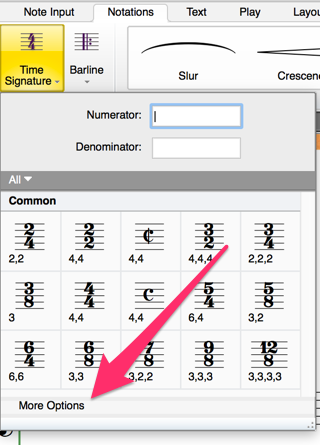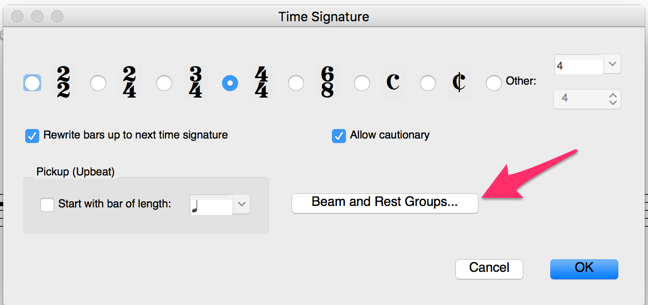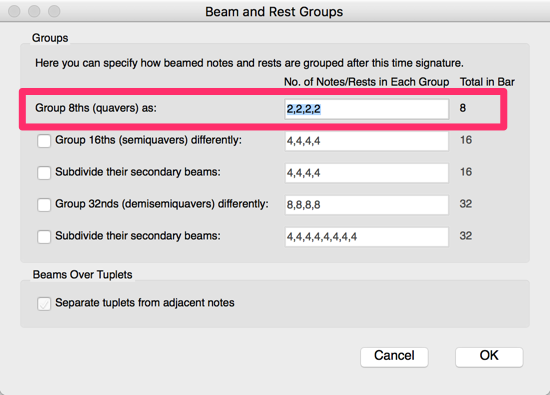Sibelius does a pretty good job in the vast majority of its default settings. There’s one thing that it does that I simply do not understand: eighth notes in 4/4 time should be beamed in twos, not fours. If you are doing some fast 2/2 music, this could make sense; but, this is an edge case for most of the scores I see. It’s possible to use the beaming controls on the third keypad layout to correct each beam individually. This is pretty tedious, and you shouldn’t use it for “global” changes like this.
The more powerful fix is to set up the beaming when you create the meter. This is super-simple, if a bit hidden. Instead of taking the default 4/4 from the Time Signature dropdown, you can make your own. To start, click “More Options”.

In the Time Signature dialog, click “Beam and Rest Groups”.

In the Beam and Rest Groups dialog, change the field labeled “Group 8ths (quavers) as:” from 4s, to 2s. Enter 2,2,2,2 to group eighths in pairs.[1]

Click OK a few times and place your new time signature. Now you’ll see the correct beaming for eighths in 4/4.
But I’ve already written the music with all these bogus beams, you say. Don’t worry, If you replace a four-eighths–4/4 with a two-eighths–4/4, you’ll be asked “Do you want to rewrite the following bars up to the next time signature (or the end of the score)?”. Answer yes, and your beams will be corrected.
Conclusion: Remember that beams are for performers, not for composers or theorists. They aren’t there to do anything other than make the metric pulse clear when there are lots of notes together that might confuse things. You’ll find other beaming practices in earlier music, some of it not even very old, that makes the rhythms harder to read. They might show syncopation or implied meters; in vocal music they could even show melismas! Learn from that music, not its engravers. Unless you have a really good reason, beam your eighths in twos any time you have a quarter-note pulse.
- Pro tip: If you are a keypad jockey like me, you might be happy to know that you can use a period dot as a separator instead of a comma and never take your hand off the keypad. ↩